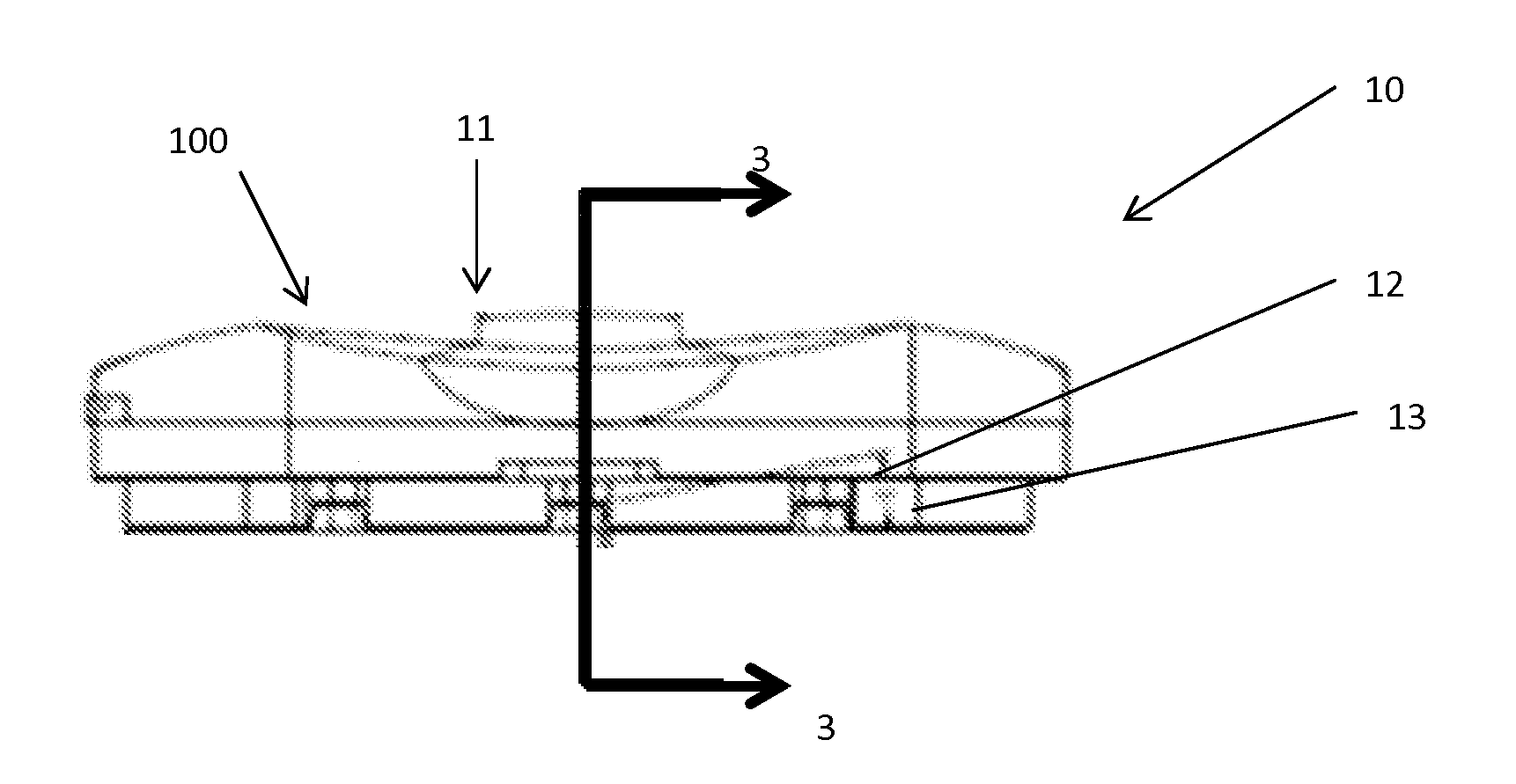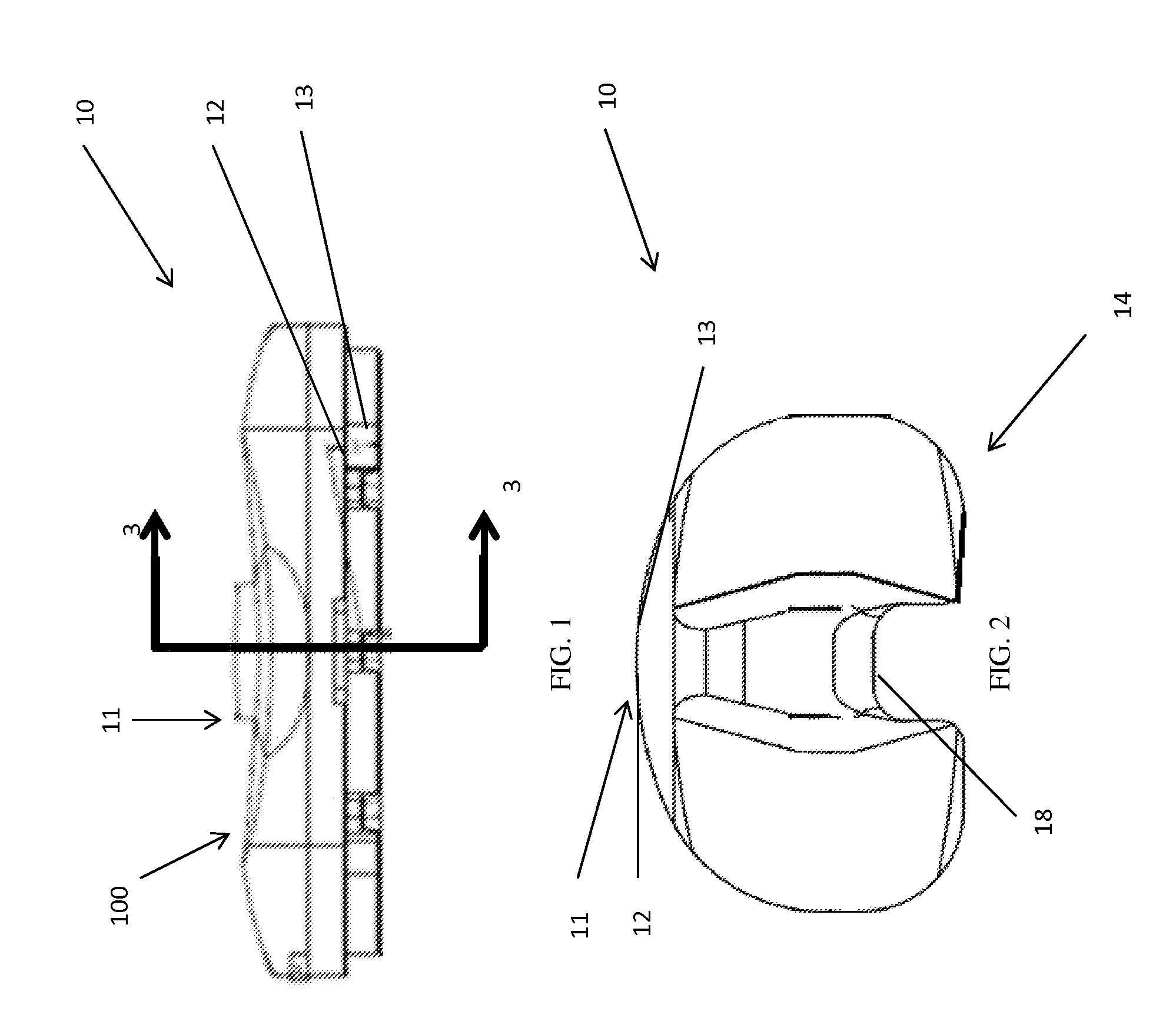Method of improving bond strength of peek implants with bone cement
a peek implant and cement technology, applied in the field of orthopedic prosthesis, can solve the problems of weak cement-less bond, low bond strength, and high cost of system, and achieve the effects of improving bond strength, high bending stress, and certain average surface roughness
- Summary
- Abstract
- Description
- Claims
- Application Information
AI Technical Summary
Benefits of technology
Problems solved by technology
Method used
Image
Examples
Embodiment Construction
[0022]FIGS. 1 and 2 illustrate a representative UHMWPE tibial bearing insert according to the present invention, generally denoted as 10. The tibial insert 10 comprises an anterior surface 11 including a locking wire 12 and locking tab 13 and a posterior surface 14 including an intracondylar recess 18 and locking recesses 15, shown in FIG. 3 (not in FIG. 2). The insert also has a bearing surface 100. In an alternative embodiment, an additional locking recess 15 may be placed within the intracondylar recess 18. Locking recess 15 engages a protrusion 24a, 34a formed on the posterior surfaces 23, 33 of the tibial trays 20, 30 as shown in FIGS. 5 and 9.
[0023]FIGS. 3 and 4 illustrate a cross-sectional view of the tibial insert 10 along line 3-3 of FIG. 1. Referring to FIG. 3, the locking wire 12 is located above the locking tab 13 along the anterior surface 11, whereas the locking recess is disposed along the lower portion of the posterior surface 14.
[0024]FIG. 4 is an enlarged view of d...
PUM
| Property | Measurement | Unit |
|---|---|---|
| surface roughness | aaaaa | aaaaa |
| surface roughness | aaaaa | aaaaa |
| temperature | aaaaa | aaaaa |
Abstract
Description
Claims
Application Information
 Login to View More
Login to View More - R&D
- Intellectual Property
- Life Sciences
- Materials
- Tech Scout
- Unparalleled Data Quality
- Higher Quality Content
- 60% Fewer Hallucinations
Browse by: Latest US Patents, China's latest patents, Technical Efficacy Thesaurus, Application Domain, Technology Topic, Popular Technical Reports.
© 2025 PatSnap. All rights reserved.Legal|Privacy policy|Modern Slavery Act Transparency Statement|Sitemap|About US| Contact US: help@patsnap.com



